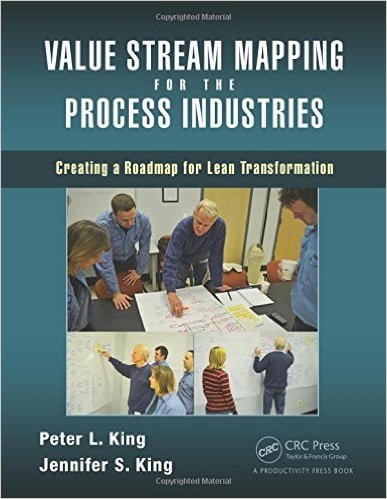Value Stream Mapping for the Process Industries: Creating a Roadmap for Lean Transformation
Providing a framework that highlights waste and its negative effects on process performance, value stream maps (VSMs) are essential components for successful Lean initiatives. While the conventional VSM format has the basic structure to effectively describe process operations, it must be adapted and expanded to serve its purpose in the process industry.
This book describes in detail how to create a complete VSM for a process industry manufacturing operation. Detailing the unique features of process operations and why they require additions and adjustments to traditional VSMs, the book walks readers through the steps in analyzing the map. It explains how to scope improvement projects, prioritize them, and then use future state VSMs to illustrate and motivate systemic improvement. In doing so, it supplies readers with a roadmap for a complete Lean transformation.
Describes how to analyze the map for waste and flow issues so that they can be reduced and even eliminated
Provides examples of the calculations needed for the flow parameters in data boxes
Explains how the VSM concept can be applied to the entire supply chain
Includes strategies for engaging your entire workforce in map creation
The book introduces a target manufacturing process and uses it to describe how to create a complete VSM. The target process is complex enough to illustrate the issues often encountered in mapping a process industry operation, but straightforward enough to explain all of the mapping considerations and decisions.
The book includes real examples of how VSMs brought much greater clarity to the real issues the processes faced and cases where the insight enabled management to avoid costly, inappropriate investments.
More info →The Product Wheel Handbook: Creating Balanced Flow in High-Mix Process Operations
The Product Wheel (PW) design process has practical methods for finding the optimum sequence, minimizing changeover costs, and freeing up useful capacity. So much so, that the DuPont™ Company and Exxon Mobil are just a few companies that have used the product wheel concept to achieve and sustain a competitive advantage.
Breaking down a fairly complex design process into manageable steps, The Product Wheel Handbook: Creating Balanced Flow in High-Mix Process Operations walks readers through the process for designing and implementing the PW technique. It includes a case study taken from actual practice that illustrates the design process and its benefits. Describing how to apply the product wheel technique to any manufacturing operation, the book:
Details the steps required to implement product wheels
Explains why certain traditional manufacturing metrics should be reevaluated so they don’t inhibit product wheel performance
Defines the cultural foundation necessary for smooth product wheel design and implementation
Includes a real-world case study and several examples of product wheels being used by successful manufacturing companies―including BG Products, Inc., the DuPont™ Company, the Dow Chemical Company, and Appleton
Many of the steps in wheel design described in this book are not new. What’s new is their application to production planning and scheduling problems, and more importantly, a clear roadmap explaining how and when they should be used in product wheel design.
Supplying you with the tools to reduce the chaos often found in production scheduling, the book outlines a disciplined structure that will allow you to spend less of your time resolving schedule problems. Most importantly, it provides your organization with a stable platform to deal with abnormal events in a less stressful and more logical manner.
More info →




